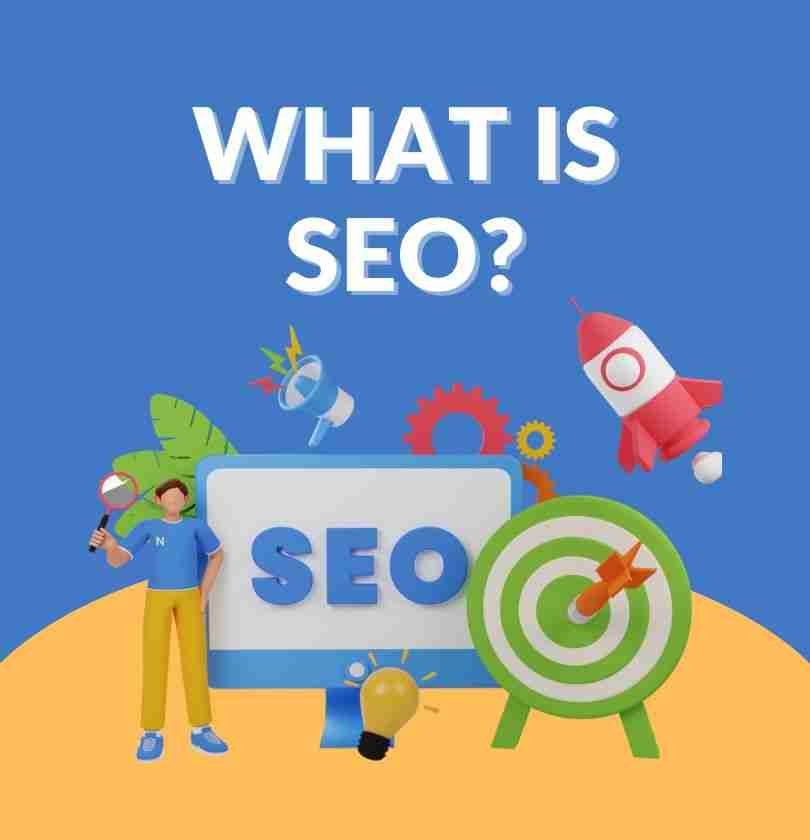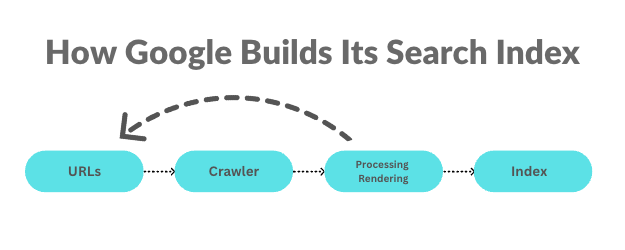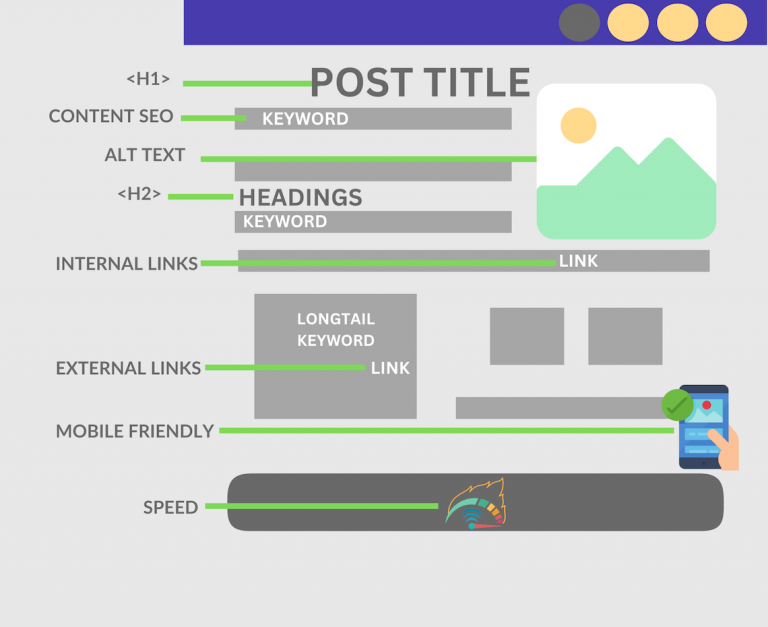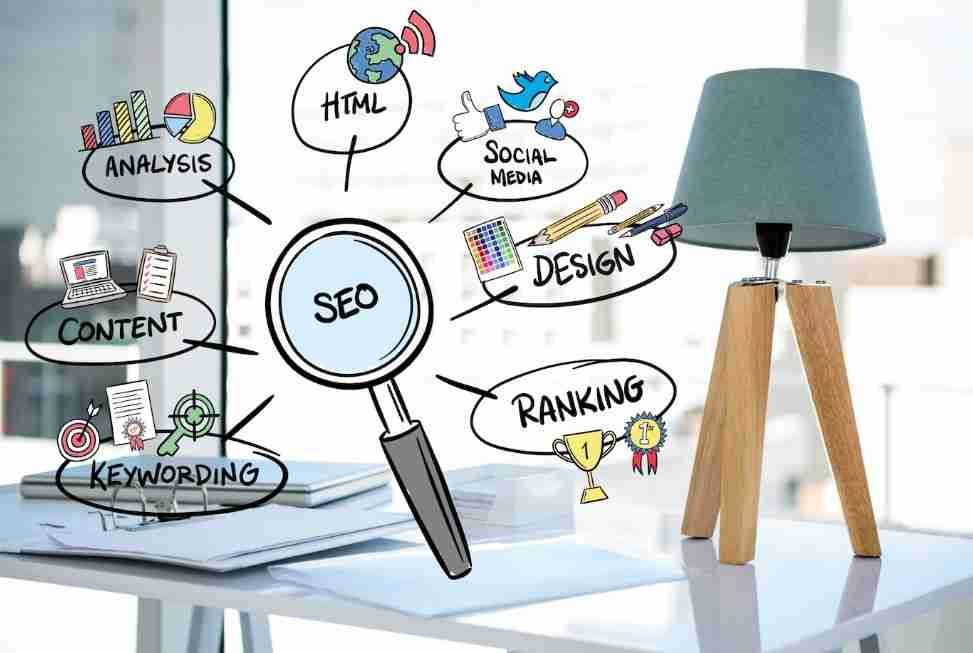
WHAT IS SEO ?
START YOUR JOURNEY TO RISE THE LADDER OF RANKING & VISIBILITY
What is SEO? In basic terms, Search Engine Optimization (SEO) is all about making your website popular so that it shows up in Search Engine Result Pages (SERPs) at higher rank. SEO is the practice done within and outside the website that helps in growing website traffic from organic search results.
Our Team
100+ MARKETING EXPERTS
10+ Years of Experience
LEARN MORE ABOUT SEO
B2B SEO
B2C SEO
Local SEO
Ecommerce SEO
Let's Get Started With Us
To get professional help with SEO services from the experts, consult eSearch Logix

Welcome to eSearch!
The Beginner’s Guide to SEO – Learn All the Key Aspects from the Experts
More and more businesses are now choosing online mediums to interact with and provide services and products to their target customer base. This highlights the importance of a website in a brand’s market position. And for online marketing, SEO has become quite influential in defining how a brand positions itself in front of customers amongst the stiff competition.
SEO is an ongoing process that has evolved since earlier times, and SEO techniques continue to update time and again. When you implement the right SEO tactics, it will result in improving SERPs ranking, attracting increased organic traffic, and improving visibility, which consequently improves your Return On Investment (ROI).
To get you started with what SEO is and how it should be strategized and implemented – Our complete SEO guide will help you tread the path successfully.
SEO is an ongoing process that has evolved since earlier times, and SEO techniques continue to update time and again. When you implement the right SEO tactics, it will result in improving SERPs ranking, attracting increased organic traffic, and improving visibility, which consequently improves your Return On Investment (ROI).
To get you started with what SEO is and how it should be strategized and implemented – Our complete SEO guide will help you tread the path successfully.
WHAT ROLE DOES SEO PLAY IN A WEBSITE’S GROWTH?
Search Engine Optimization (SEO) is the practice and tactic that is done to improve a website’s visibility and technical structure as per search engine guidelines. It helps to improve sites’ ranking in organic search results for user search queries related to the products or services the website/brand provides.
Is SEO any kind of Tool or a Method?
SEO isn’t a tool at all. It is a combination of different practices and methodologies that are implemented to grow the site organically. It is not something that you can use as software or program but is a combination of practices that you implement to make your brand popular and attract traffic. Therefore, it becomes essential that you consult a professional SEO company that has the knowledge, resources, and technology to do what needs to be done for a successful SEO strategy.
SEO Basics – Get In-Depth Knowledge
As we have discussed above, SEO is a broad term and field and involves a lot of techniques and processes. Before delving into what are SEO types, their benefits, and what SEO strategies are good and what not, there is a lot that you need to know about SEO basics, which we have covered in our SEO resources below.

How do Search Engines work?
Search engines use a combination of methods and automated algorithms to scout the web and find the most relevant and fitting answer to a search query. This is why knowing search engines’ functionality becomes important for businesses to deliver their message and content that the search engines find relevant and show in organic results.
Search engines use a combination of methods and automated algorithms to scout the web and find the most relevant and fitting answer to a search query. This is why knowing search engines’ functionality becomes important for businesses to deliver their message and content that the search engines find relevant and show in organic results.
Search engines work following three key steps:
- Crawl – When a search query takes place on a search engine, it searches through billions of pages online to look for the content/code which is relevant to answer the related query.
- Index – After the search engine bots find the relevant pages and content, it stores and organizes the data. These pages are then indexed (get queued) to be displayed on SERPs for search queries.
- Rank – The search engines rank the content that it finds providing the best and most helpful solution to answer the searcher’s query. The ranking is decided based on – the most relevant and appropriate content at the top, and the least relevant at last.
Search engines use bots, called crawlers or spiders (automated programs), to look for and find the indexed content depending on the search query. Crawling, indexing and ranking by search engines are done based on various factors (more than 200 to be precise), including relevancy, knowledge, uniqueness, in-depth solution to users’ queries, and so forth.
How to Align Your SEO Strategy to Search Engines’ Functionality?
Now as you know how search engines work, you need to work on your SEO strategy factoring in how search engines work. Your SEO implementation should enable the search engines to:
- Crawl and index your webpages
- Understand what your web pages are about
- Evaluate the content and display that on SERPs
Your SEO strategy should include optimization tactics that ensure that your content and pages are ranked highly, corresponding to the search queries. Google and other search engines work to find and evaluate the most suitable content, which is what your SEO process should be to make your website all about. The main goal of SEO concerning how search engines work is to make your site and pages useful and relevant to what users are searching about on the search engines, which will help to drive your organic ranking results and traffic.
Why is it Important to Check if Your Site is Indexed? How to Get Your Site Indexed?
Do you think that after you have developed your site, updated the content, and launched it, search engines can crawl and index it? It doesn’t happen that way. For this, your site needs to be indexed. Your site’s indexability is a core aspect that has to be checked; else, if search engines aren’t able to find your website and content for search queries, it won’t get displayed in the SERPs.
- The first thing you have to do after you create a webpage with updated content is to see whether it is indexed or not. To check if your site is indexed, put in a simple search query: “site.nameofthesite.com”
- Doing this simple query will return the answer if your site or any particular page is indexed or not.
- Another way you can search for an indexed site or page is by using – Google Search Console
- Ensure that when you create and publish a new page, you are interlinking content on the page to other site pages (wherever it is relevant to interlink).
- Also, ensure that you don’t accidentally block Google and other search engines from crawling your website.
If the page or the site is not indexed, it is vital that you get your site/webpage indexed.
How to Align Your SEO Strategy to Search Engines’ Functionality?
Now as you know how search engines work, you need to work on your SEO strategy factoring in how search engines work. Your SEO implementation should enable the search engines to:
- Crawl and index your webpages
- Understand what your web pages are about
- Evaluate the content and display that on SERPs
Your SEO strategy should include optimization tactics that ensure that your content and pages are ranked highly, corresponding to the search queries. Google and other search engines work to find and evaluate the most suitable content, which is what your SEO process should be to make your website all about. The main goal of SEO concerning how search engines work is to make your site and pages useful and relevant to what users are searching about on the search engines, which will help to drive your organic ranking results and traffic.
Why is it Important to Check if Your Site is Indexed? How to Get Your Site Indexed?
Do you think that after you have developed your site, updated the content, and launched it, search engines can crawl and index it? It doesn’t happen that way. For this, your site needs to be indexed. Your site’s indexability is a core aspect that has to be checked; else, if search engines aren’t able to find your website and content for search queries, it won’t get displayed in the SERPs.
- The first thing you have to do after you create a webpage with updated content is to see whether it is indexed or not. To check if your site is indexed, put in a simple search query: “site.nameofthesite.com”
- Doing this simple query will return the answer if your site or any particular page is indexed or not.
- Another way you can search for an indexed site or page is by using – Google Search Console
- Ensure that when you create and publish a new page, you are interlinking content on the page to other site pages (wherever it is relevant to interlink).
- Also, ensure that you don’t accidentally block Google and other search engines from crawling your website.
If the page or the site is not indexed, it is vital that you get your site/webpage indexed.
BENEFITS OF SEO FOR YOUR WEB PRESENCE
SEO is the core practice in present times defining the success of your brand/business website. The better you are able to optimize your website, the better your chances are to rank higher in SERPs.
For your website to grow and attract an audience, you can’t ignore the importance of online marketing. And this is where SEO is the most beneficial strategy with help in:

- Less Costing, More Benefits – While there are services like paid brand promotions and campaigns, SEO is something that isn’t that much expensive. Most of the visitors come from organic search results, which highlight the importance of SEO. When you do the SEO correctly, you get maximum benefits with improved ranking, traffic, and revenue. SEO optimization doesn’t cost too much, but the benefits are long-lasting, with increased ROI.
- Brand Visibility – SEO helps to structure your website layout and publish information that people want to read and know. SEO is important as it helps you to get all the key elements right. It makes the website user-friendly, and the information relevant to what users are searching for related to what you do. This means you have a higher chance of appearing above in SERPs ranking, which improves brand visibility.
- Improved Traffic – With a higher ranking, you get higher inbound organic traffic. SEO ensures you are using the right, search-intent-based keywords, which help to make webpages rank better, bringing in more traffic.
- Improved Lead Generation and Conversion – SEO enables you to make each piece of content and information relevant to your target audience. This means there is a higher chance of your site attracting and engaging more people who are genuinely interested in what you sell and do. This improves your chances of conversion and increased revenue.
- Enhanced Brand Credibility – When you rank higher in organic search results, people show trust in your brand, which makes you more credible. This increase in trust genuinely improves your image in your industry amongst your target audience and makes you an authoritative brand.
START LEARNING SEO TECHNIQUES

Now as you have gone through the SEO basics, how search engines work and what benefits you gain with SEO, it is time to take you through the learning process of SEO techniques.
Steps to SEO – Optimization Techniques
Website Audit
First and foremost thing before you plan your SEO strategy and execute that, you need to evaluate the overall SEO health of your site at present.
Website audit helps to evaluate the performance of each page before you launch into a large-scale and thorough SEO practice (along with website redesign, if needed). The website audit helps to determine how much it is optimized, whether it is right and how much, and at what scale it needs the SEO implementation, from what degree to what level.
Website audit helps to evaluate the performance of each page before you launch into a large-scale and thorough SEO practice (along with website redesign, if needed). The website audit helps to determine how much it is optimized, whether it is right and how much, and at what scale it needs the SEO implementation, from what degree to what level.
Key Elements of Website Audit:
- Competitor Research – It tracks what your competitors are doing, what they are doing right, and what their site’s core fundamental is. It helps to look into what keywords they are ranking for, along with assessing their technical, on-page, and off-page SEO practices.
- Lead Conversion Audit – Are you getting qualified leads and a high conversion rate? This audit helps to check lead conversion optimization factors, including forms to contact the lead, checkout process, design & layout of the site, quality and effectiveness of the landing page, and overall user experience.
- SEO Audit – This analysis looks for all the factors that can impact your website or webpage’s performance in SERPs. This includes factors such as keyword usage, metadata, page speed, content, multimedia optimization, user experience, and much more.
- Social Media Audit – While Social Media isn’t directly affecting your site’s ranking as per Google, it matters for user engagement and brand popularity. How well you have your presence on social media channels can impact your brand’s exposure and user experience in front of your target audience.
Link Audits – This audit helps to determine the health of your internal linking, as well as backlinks from other sites to your site pages. This determines what ‘link juice’ you are getting.
Website Audit helps to identify the SEO issues which need correction right away. It provides you an insight into the website performance – technically and content-wise, conversion rate performance, and more.
Keyword Research
‘In SEO, your focus should be on creating content related to what the user is searching for and what search keywords you have to rank for’
- The first and foremost reason for keyword research is – To understand what your target audience is looking for.
- Keyword research is the first step to defining the entire SEO strategy and plan implementation.
- Keyword research helps to look for target-audience search queries because that is whom we want to target, those are who will become our customers, and because it is what search engines reward sites for.
- For your keyword research strategy, you should look for short, mid-tail, and long-tail keywords that your target users are likely to use when searching for products and services related to your business.
- There are several keyword research tools that you can use for this purpose. Using them is a simple process. However, an SEO expert is the best one to know how to search the tool, what factors to consider, and how to pick the right keywords specific to the target audience, customer profile, demographics, and other factors.
- Use different form keywords – short-term, phrases, mid-tail, and long-tail to target different target audiences comprehensively.
- Optimizing your content with keywords is important for your entire SEO process – Use keywords justifiably, at the right place, with proper integration, and in the right density (1-2%), throughout your site.
- Keywords must be used in meta titles, meta descriptions, page titles, headings, page content body, image alt-text, product descriptions, and more places, according to the targeted search queries and what search engines and users look for in information.
On-Page Site Optimization
Core SEO practices are basically distinguished between two facets – On-Page SEO and Off-Page SEO.
On-Page SEO is what you do within the website. Off-page SEO is what you do outside of the website to promote the site and bring traffic.

Let’s discuss On-Page SEO first:
On-page SEO is all about looking into factors that constitute your website. When your website elements are right then only you can follow it up with off-page SEO practices. One good thing about on-page SEO is that you can control this, as per what search engines say. An effective subset of SEO strategies, on-page SEO is all about the information and technical build-up architecture of your website.
The core elements of On-Page SEO are:
- URL – It should be unique, clear, concise, and resonate with your business and industry. Pay attention to the hierarchy of the page categories for each page’s URL.
- Title Tag – Each page has an HTML code known as a ‘title tag’, which is the first thing search engines and users look at to know about what the page is all about. Optimize the title tag by using the topic of the page itself. Ensure these are not too short or too long, and don’t use the same title tag for multiple pages.
The core elements of On-Page SEO are:
- URL – It should be unique, clear, concise, and resonate with your business and industry. Pay attention to the hierarchy of the page categories for each page’s URL.
- Title Tag – Each page has an HTML code known as a ‘title tag’, which is the first thing search engines and users look at to know about what the page is all about. Optimize the title tag by using the topic of the page itself. Ensure these are not too short or too long, and don’t use the same title tag for multiple pages.
- Meta Description – It is the description that appears below the page title tag on the search result page. Descriptive meta information, including the main keywords, ensure higher clickability for the page.
- Heading Tags – It is also an HTML code wherein you should mention the content sections of your page. Ensure each page has one H1 tag, and at least one H2 tag (these can be multiple too).
- Content – Follow the VUUSP content form – ‘V’ for Valuable, ‘U’ for Unique, ‘U’ for Up-to-date, ‘S’ for shareable, and ‘P’ for professional. Ensure that your content is interesting and engaging, provides the solution to the user’s query, and it should be original, rich, and insightful.
- Keywords – Keywords should be used throughout your site, including page title tags, headings, meta descriptions, and page content. Use keywords relevant to what the page is about and specific to what the user’s search intent is.
- Alt Tags (Image & Multimedia Optimization) – These are descriptions you mention, along with the images and other media files you use (including videos and more). This helps search engines to know what the media file is about.
Don’t overuse keywords. Ensure to emphasize improved readability, keep paragraphs and sentences brief, and use sub-headings and bulleted lists.
- Site Load Speed – It is a big ranking factor used by Google to rank pages. Ensure your website loads quickly enough (within 3 seconds is ideal). Even a second longer time increases the bounce rate.
- Internal Linking – Link pages internally that help search engines, as well as users, find more relevant content, which improves showing what your website content focuses on and improves engagement.
- Website Design – Website design should be SEO-friendly, clear, and improves usability. It should be laid out logically, streamline your site’s navigation, and the pages should link forward and back following the ‘to category, sub-category’ pathway.
- Responsiveness – More than half of online traffic is generated through phones and mobile devices. Thereby it becomes necessary that your website is responsive and users can navigate through the site on any device they access the site from.
- E-A-T – It stands for Expertise, Authoritativeness & Trustworthiness. For your on-page signals, you have to follow the E-A-T principle in-depth. Prove authority in your field, use your expertise when creating content, and create trust amongst your users and in front of search engines.
Using visual assets like images, infographics, and videos in your content makes the web pages appear appealing and engaging.
When you are targeting the local audience, i.e. within a specific geographic location, optimize your site content for local search keywords and for local listings and citations by using NAP (Name, Address & Phone Number).
All the factors mentioned above help to make the site design and information updated as per search engines’ guidelines and improve user experience, which is the key focus of on-page SEO strategy.
Technical SEO looks at the technical aspects of the site, meaning its architecture, framework, server optimizations, and how the website functions. Technical SEO can be correlated with on-page SEO, but the latter is much broad in optimization approach. Having basic website development knowledge is somewhat needed when you are doing technical SEO optimization.
Site Indexation – Evaluate if a certain webpage or website is properly indexed or not. Google and other search engines are able to locate, crawl and index only the pages that are indexed rank and display them in the organic search results.
XML Sitemaps – This denotes all the URLs associated with a website. It provides a pathway for the crawler or search engines to locate and reach the specific content location on a particular site.
Orphan Pages – These pages don’t link to any parent page. That means it is possible that a user may not be able to navigate to these pages. Identify these, and if you think these are necessary to display information to the users and target search queries, fix the navigation issue.
Site Pages’ URL – URL structure has to be created showing what the page denotes in information. These should be short, clean, and incorporated with primary targeted keywords.
Page Load Speed – Higher load time has a negative impact on your site’s SEO. Use browser caching, compress images and multimedia on pages, minify CSS, HTML, and JavaScript, and do other integrations to improve page load speed. Ideal page load speed is below – 3 seconds.
Duplicate Content- Duplicate content is a certain no-no in SEO and must be avoided at all costs. You can use canonical tags, 301 redirects, and de-indexation to ensure duplicate content is not crawled by the search engine bots.
Keyword Use – Use keywords in proper density and at all the necessary places like page title tags, meta descriptions, H1, and H2. Avoid keyword stuffing, meaning avoid overusing keywords.
Mobile-Friendliness – This means your site is accessible through mobile devices as well, with proper layout and content display.
Canonical Tags- These are tags that tell search engines which is the parent page and ensure that you can control content duplicacy.
Technical SEO helps to control the website architecture, technical elements, as well as design and layout.
Off-Page SEO

Local Listings – Specific to local SEO, it becomes important to submit your business to local directories to gain reputation, ranking, and visibility pertaining to local searches.
Broken Link Building – This activity includes finding broken backlinks and then rectifying those through different means, including contacting the owner, refreshing, or resubmitting the content with new backlinks
Social Media Shares – Social media is as effective as any other medium for the outreach process and target audience engagement. Create your brand presence on multiple social channels and post regularly, creatively, and engage with your target audience.
Off-Page SEO includes activities that you do outside of your website for its promotion and improved brand exposure. These activities aren’t in your control. However, the better and more skilled you are in doing these, the better results you will gain.
Key Elements in Off-Page SEO:
Guest Posting – Write quality, informative blogs, articles, and other content that you publish on different platforms like third-party sites. Choose high-authority sites linking back the content to your website or landing page, which will ensure you gain better authority, and credibility.
Link Building – Link building is the essential aspect of Off-page SEO and one of the significant ranking factors for search engines. Try to gain high-authority backlinks from prominent networks regularly, which is a key activity of any off-page SEO strategy.
Content Marketing – Create, post, publish and share valuable, informative, insightful, and in-depth content related to what you do in your industry. Create content in multiple verticals, including blog posts, images, videos, audio, and more.
Social Bookmarking – This includes creating your business profile on social bookmark websites, publishing information, and making your presence with regular engagement with the community.
Apart from the above-mentioned activities, there are several off-page SEO activities that you should implement. These include blog commenting, forum posting, answering on Q&A sites, conducting surveys, and interviews, publishing case studies, encouraging your present and past users and customers to share their positive reviews and experiences and creating and posting videos to enhance your presence across the different mediums that improve your brand visibility.
Off-Page Strategies to Follow:
- Find your product or service niche and work according to that
- Ensure that you provide excellent customer service
- Combine good practices in On-page and Off-page SEO
- Know your audience – write, publish and target according to them
- Assess your backlink profile, how strong it is, and with what practices you can make these stronger
- Conduct competitor research to look for their backlink profiles, find the gaps and fill them
- The stronger your internal linking is, the better your backlink strategy will yield results through Off-Page SEO activities
- Combining paid ads can boost your Off-Page SEO results
Difference Between On-Page and Off-Page SEO
On-Page – These are activities that you do within your website, which you can control. These include technical as well as keyword, content, and other strategic factors within your site.
Off-Page – These are activities that you do outside of your website and thus aren’t in complete control of yours. These include practices like sharing content, building backlinks, and engaging with the target audience to enhance brand exposure, rank higher in SERPs and increase inbound traffic.
Measure SEO Performance
What you are achieving with your SEO practice and implementation? Are you able to get the result pertaining to ranking, traffic, leads, and conversion as per your objectives? What is that you are doing right and what is not? What SEO activities need tweaking, reduction, or addition? All this can be done when thoroughly measuring and tracking your SEO performance. Thereby, it becomes an important aspect of your entire SEO journey.
Goals to Focus on When Measuring SEO Performance:
- Create goals that are achievable and practically possible.
- Don’t deviate from your objective. Be specific in what you want to achieve. Keep track of every action plan and what result it provides.
- Work step-by-step to achieve your goals and work accordingly.
Tracking and measuring your SEO performance also includes evaluating which keywords rank well, which targeted keywords users search more, and which need to be changed, added, and removed. Tracking SEO results also helps to get an insight into the number of backlinks created, and more factors. There is a range of tools and platforms that you can integrate and use to keep tracking your SEO performance in real time.
Metrics to Focus on to Track and Measure Your SEO Success:
- Engagement Metrics – Look at how people behave on your site and how engaging they are in finding the information on the site.
- Conversion Rate – Keep track of how many people reach your landing page or site and how many of those you can convert into paying customers.
- Time on Page – Assess the time visitors are spending on your site. If they are moving away too quickly, that means you need to look at your content, information, and SEO strategy.
- Pages Per Visit – This metric show how many pages users visit and navigate each time they visit the site. Assess how many visits a certain page has got and which is the most popular and most viewed page.
- Scroll Depth – This helps to analyze how users are reading the entire content on a certain page and if they are scrolling down to the last section.
- Organic Traffic – How much organic traffic is your site generating through SERPs with targeted keywords? Use tools like Google Analytics to get a clear number. Isolate the organic traffic from the traffic coming from other campaigns like paid or sponsored ads.
- Click-Through-Rate (CTR) – This assesses how many people have clicked a certain page of your site from the search results for a specified period. This can be done using Google Search Console.
White-Hat SEO vs. Black-Hat SEO
White-Hat
This includes working and implementing SEO techniques and practices according to search engine terms and guidelines. Whatever optimization activities and techniques we have mentioned above fall under the ‘White-Hat SEO’ and are specific to search engines’ terms of service. Doing such keep-up maintains the website’s integrity and improves SERPs performance.
Black-Hat SEO
These are SEO practices that are spam or against the search engine guidelines. Such activities are done to improve the site’s ranking and traffic through means that are against the terms of service of search engines. Thereby, such activities, even when delivering results for a few minutes or hours, may get the search engines to identify the spam and penalize the website.
What SEO Mistakes You Should Not Commit?

- Paid Links – Buying paid links rather than earning them by publishing quality content will hurt your site’s credibility and is also considered spam activity by search engines.
- Re-Directing or Cloaking the User to Another Site – This means you are deviating the user as well as search engines from where the original location of your content and the site.
Not everything that you read about or from someone is the right SEO. Like any other process or plan, there are do’s and don’ts in SEO. If you commit some SEO mistakes, then it can negatively affect your site’s health. In fact, it can be more hurtful to your SEO campaign than doing only limited SEO. SEO mistakes can lead to penalties from the search engines and are considered a no-no.
So, as we have mentioned in the above section, Black-Hat SEO is what you shouldn’t do, and stick to only White-Hat activities.
Some SEO activities that have to be avoided at all costs include:
- Plagiarized Content – This means duplicate content. Content is the most important aspect of your site’s SEO, and publishing, knowingly or unknowingly, duplicate content is a big SEO mistake that will severely impact your site’s SEO.
- Keyword Stuffing – This refers to using the keywords in an unnatural way. This means you are overusing keywords in your text (above prescribed keyword density).
Apart from these, there are several other Black-Hat or SEO mistakes that you should not commit, which include:
- Generating automated content
- Using hidden text or links
- Negative SEO (reporting a competitor unnecessarily or with an intent to hurt and down their site)
- Using doorway pages
- Using link schemes
- Creating pages with no original, unique content or with little content
- Mistreating rich snippets mark-up
- Sneaky redirects
- Using scrapped content
- Using irrelevant keywords and content
- Creating pages with malicious intent like installing a virus, badware, or any Trojan onto the user’s device
- Doing affiliate without providing any practical value and meaning to the user
- Sending queries to Google that are automated
Types of SEO
SEO isn’t a one-size-fits-all kind of approach. But the approach in SEO and how it has to be done and implemented depends on the goal and objective. Thereby there are different types of SEO practices.
Local SEO
When you are a retail store or a service provider with your target audience in a specific geo-area or demographic or a limited location, then you have to implement Local SEO. There are certain techniques that Local SEO uses including optimizing for local citations, review sites, local directories, and use of keywords in content ‘near me’, and ‘location name’.
Voice SEO
With assistants like Siri, Alexa, and such, people are now using voice search to find answers through search engines. When they conduct a voice search, the search criteria effectively change. And this is what Voice SEO has to target, optimizing the site for voice search-enabled devices like mobile phones, smart speakers, and more.
Enterprise SEO
This can be termed as international SEO or general SEO for large enterprises having a big web presence that targets a global audience or across many regions. This SEO includes optimization techniques that use short-tail and long-tail keywords.
Small & Medium Size Business (SMB) SEO
A shorter goal or objective-specific approach to the enterprise SEO, SMBs SEO has to be done pertaining to the particular business requirements, industry, and goals.
Business-2-Business (B2B) SEO
When you are selling to the business, it means you have a huge sales cycle to consider; thereby, your sales funnel is also bigger. There are multiple stakeholders pertaining to the potential client. Therefore the search criteria changes, and this is what B2B SEO has to focus on. The content has to be more detailed and much more professional in tone.
Business-2-Customer (B2C) SEO
For businesses that target individual buyers and users, the sales cycles are shorter, and the search process is also individual-focused. Thereby the individual user intent is what B2C SEO focuses on. The keyword research and optimization process are also effectively done with respect to customer persona.
Ecommerce SEO
E-commerce SEO for online sellers includes an approach or implementation that is explicitly done to rank product pages, highlight the product categories and improve sales. E-commerce SEO also involves activities to enhance the site’s exposure and ranking on sites like Google Shopping, Amazon, and such.
How to Plan Your SEO Strategy?
SEO is a continuous process and is consistently evolving. It has to be done keeping many factors in mind, like the type of SEO to be practised, business, industry, target audience, competition, and much more. There are several aspects to planning your SEO strategy, which you should plan and prepare for.
Your SEO strategy has to be data-driven and research-based and must be implemented with actionable plans and clear objectives.
Want to gain more insight into what SEO is, what it can do for you, how the SEO experts will work with you, and why it is the need of the hour for your business?
SEO to Drive Your Revenue
Work with eSearch Logix SEO Experts
If you want to gain the most from advanced, in-depth, data-driven, and agile SEO strategies, eSearch Logix can help.
eSearch Logix is a full-scale digital marketing company that specializes in providing comprehensive digital marketing and SEO services to businesses of all sizes, types, backgrounds, and target customers.
We have a team of SEO professionals, content creators, and research analysts who know how to create a successful channel for driving the digital growth of a business. Our approach is custom-tailored with respect to each of our clients, crafting strategies and methods that best deliver the results and beyond that.


